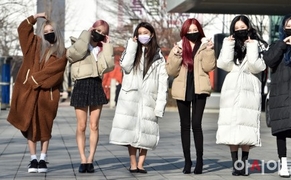 |
| People wait in a line to get tested for COVID-19 in Daegu, on Dec. 9, 2021./ Source: Yonhap |
AsiaToday reporter Lee Sun-young
Amid the fast growth in severe COVID-19 cases, the South Korean government admitted that it did not expect a sharp increase in the number of critically ill patients. The medical community strongly criticized it, saying it was an absurd excuse.
“The vaccine’s efficacy, which was expected to last for six months, has declined three months later,” said Park Hyang, a senior health ministry official. “We have prepared hospital beds considering the rate of critically ill patients, which has been staying between 1.4 to 2.7 percent. But the number of critically ill patients has increased dramatically,” Park said. “The aggravation rate is occurring at around 2 to 2.5 percent, which is slightly higher than the 1.6 percent originally assumed,” said Son Young-rae, a senior health ministry official said.
Experts pointed out that the government could not have predicted the surge in critically ill patients.
“The aggravation rate recorded 4 percent when the virus spread in Daegu and North Gyeongsang last year. It dropped to 1.6 percent in September, and then increased again in October,” said Jung Ki-suk, a professor of pulmonology at Hallym University. “Even being aware that many respiratory diseases occur in winter, the government implemented the scheme of ‘living with COVID-19’,” Jung said.
“It is natural that the number of critically ill patients will increase as the number of confirmed cases increases,” said Chun Eun-mi, a professor at the Ewha Womans University Medical Center. “Since it is winter, the infection rate normally rises quickly through indoor contact. But the government did not prepare beds and personnel,” Chun said.
Currently, the rate of becoming critically ill patients is about 2.5 percent. This means that 175 out of 7,000 new cases are admitted to intensive care within two weeks at the latest. The country’s new COVID-19 cases stayed above 7,000 for the second consecutive day, indicating that about 250 severe cases occurred within two days.
However, many hospitals in greater Seoul region are running at near-full capacity. As of Thursday, 85 percent, or 121 beds, of all intensive care unit (ICU) beds in the greater capital area are being used. If it is difficult to allocate beds in the greater capital area, patients are transferred to other areas. But 78.8 percent or 266 ICU beds in other regions are occupied. The number of ICU beds left for critically ill patients is virtually running low considering that it is difficult to fully operate the ICU beds due to admission and discharge procedures.
“Many patients arrive dead while waiting for a hospital bed, or wait in the emergency room for two weeks because of ICU bed shortage,” Chun said. “Even with the expansion of beds, hospitals face difficulties to operate due to many quarantined medical staff.”
As of Thursday, 1,003 patients are waiting for hospital beds in the greater Seoul region, and 302 of them have been waiting for more than 4 days. Nearly 45 percent or 454 of them are patients aged 70 years or older. Concerns about the spread of the new omicron variant are growing. The country has newly confirmed 22 omicron cases, raising the total caseload to 60.
Meanwhile, the country confirmed 7,102 new COVID-19 infections. The number of critically ill COVID-19 patients jumped to a record high of 857. The death toll rose 57.
#critically ill patients #surge #ICU beds
Copyright by Asiatoday
Most Read
-
1
-
2
-
3
-
4
-
5
-
6
-
7





















